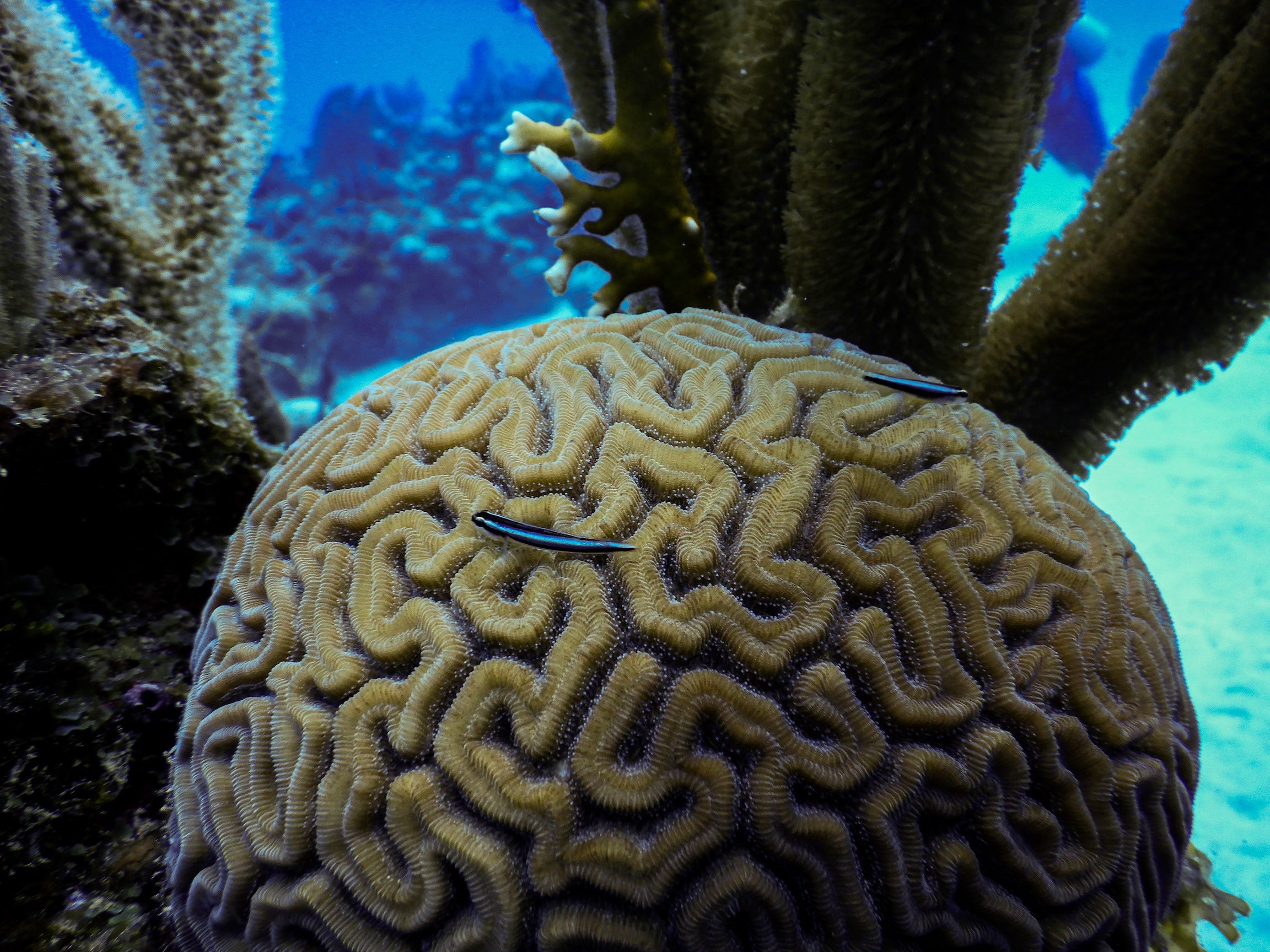Where do you go when you're a fish and you need a skincare treatment? Coral reefs contain natural "beauty salons," lively social hubs of activity where fish "clients" swim up and wait to be serviced by smaller fish cleaners. The little cleaners dart under and around their much bigger clients - even entering their mouths - cleaning their scales of bacteria and parasites like a team of car washers servicing a Buick. Sometimes cleaners even rub against their clients, providing a soothing massage.
But aside from skincare benefits, what role might busy cleaner fish stations play in spreading microbes and bacteria - for good or ill - throughout the reef?
A study published in the journal Marine Ecology Progress Series is the first to investigate the influence of cleaner fish stations on reef microbial diversity. It is led by scientists from the University of California, Davis, and Woods Hole Oceanographic Institute (WHOI) in collaboration with the University of Miami Rosenstiel School of Marine, Atmospheric, and Earth Science.
Could busy cleaning stations, like some medical clinics, be hotspots for spreading bacteria and pathogens? Conversely, could they help spread beneficial microbes among reef communities? Such questions carry important implications for protecting and restoring coral reefs.
"How pathogens or microbes are moving around a reef could be critically important to understanding how individuals will be affected," said lead author Anya Brown, an assistant professor with the UC Davis Bodega Marine Laboratory and a National Geographic Explorer who conducted the study while at WHOI. "We know microbes play a role in coral bleaching, for example. This study really lays a foundation for using cleaner fish stations as a way to study movement of microbes around the reef environment."
Cleaner fish and reef health
One hardworking fish is the cleaning goby, a pinky-sized fish with a boldly colored stripe running along its length. To understand how the presence of cleaner fish stations influence microbial diversity, the researchers experimentally removed cleaning gobies from cleaner stations on two Caribbean reefs in Puerto Rico and St. Croix in June 2021. They compared water nutrients and microbial communities of the surrounding reef area with and without gobies. This also included resident damselfish, frequent clients of cleaner gobies.

They found that more fish visited sites where cleaner fish were present compared to where they were removed in both Puerto Rico and St. Croix. They also found that cleaner fish do influence damselfish and reef microbial diversity, but the extent of their role depends on substrate type and the specific reef environment, as each reef carries a unique microbial signature. In the study, client fish, nutrient concentrations and water bacterial cell densities varied throughout the sites.
The authors say the results highlight yet another potential impact of cleaner fish and the need to further demystify their role in shaping reef microbial diversity and transmission.
Tiny fish can have big impact
"While larger organisms on coral reefs attract the most attention, the study underscores the huge impact tiny organisms such as these fish can have and how important they are to helping healthy reef ecosystems function," said co-author Paul Sikkel, a research professor at the Rosenstiel School's Department of Marine Biology and Ecology. "While cleaner fish are well-known for their role in consuming parasites and reducing stress in other fish, this is the first field study to quantify their effects on microbes of other fish and the surrounding coral reef environment."
Additional co-authors include Amy Apprill and Jeanne Bloomberg of Woods Hole Oceanographic Institution (WHOI), Gina Hendrick and Matthew Nicholson of the University of Miami Rosenstiel School, and Marta Soares and Raquel Xavier of the University of Porto in Portugal.
The study was funded by the National Science Foundation, WHOI, and The Foundation for Science and Technology in Portugal.






